|
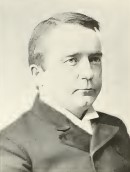 DANIEL WEBSTER BRUCKART On both the paternal
and maternal sides of the house Daniel Webster Bruckart,
a lawyer at St.
Cloud, Minnesota, is a descendant, in the fourth
generation of prominent Hollanders who came to America
during- the early part of the eighteenth century. He was
born at Silver Spring, Lancaster County, Pennsylvania,
April 23, 1851, the son of Samuel and Catharine
(Habecker) Bruckart. Samuel Bruckart
was a native of the same county, and lived there all his
life. He was engaged in the coal business and was
largely interested in the development of iron mines in
Lancaster and Cumberland Counties. He was prominent in
the politics of his county and was a strong adherent of
old Simon Cameron. Before the formation of the
Republican party in 1856 Mr. Bruckart was a Whig of the
Northern stripe, known as “woolly head.” He sided with
the abolitionists and was an active participant in the
operation of the “underground” railroad in the
ante-bellum days. DANIEL WEBSTER BRUCKART On both the paternal
and maternal sides of the house Daniel Webster Bruckart,
a lawyer at St.
Cloud, Minnesota, is a descendant, in the fourth
generation of prominent Hollanders who came to America
during- the early part of the eighteenth century. He was
born at Silver Spring, Lancaster County, Pennsylvania,
April 23, 1851, the son of Samuel and Catharine
(Habecker) Bruckart. Samuel Bruckart
was a native of the same county, and lived there all his
life. He was engaged in the coal business and was
largely interested in the development of iron mines in
Lancaster and Cumberland Counties. He was prominent in
the politics of his county and was a strong adherent of
old Simon Cameron. Before the formation of the
Republican party in 1856 Mr. Bruckart was a Whig of the
Northern stripe, known as “woolly head.” He sided with
the abolitionists and was an active participant in the
operation of the “underground” railroad in the
ante-bellum days.
Young Bruckart attended the
public schools of his native town until his fourteenth
year, when he went to Millersville Normal .School. When
but in his fifteenth year he began teaching, doing this
in the winter months and attending the normal school
during the summer. Afterwards he entered Lafayette
College, at Easton, Pennsylvania, staying at this
institution three years. His pronounced oratorical gifts
were developed at this college. The most prominent
feature of student life at Lafayette was the rivalry
between the two literary societies, Washington and
Franklin Halls.
These two societies alternated at commencement in
having a senior give an address, the other society
selecting a sophomore to respond. Daniel had the honor
of being selected to give the sophomorical address. He
was also active in the debating societies, his
experience here serving him a good turn later in his
profession. He was historian of his class and a member
of the Phi Kappa Psi fraternity.
Daniel at this time having
decided to make law his profession in life, and also
intending to practice in the West, thought it best to
receive his law training in a Western school, so entered
the Iowa State Law School at Iowa City, Iowa. He
graduated from this institution with the class of 1872.
and commenced active practice at Independence, Iowa.
Since that time Mr. Bruckart has always been engaged in
the general practice of law. He remained at Independence
until 1883, when he moved to Minnesota, locating at St.
Cloud. He formed a partnership with James McKelvey,
ex-judge of the district court, which partnership
continued until judge McKelvey’s death, since which time
Mr. Bruckart has continued in practice alone. In
politics he followed in his father’s footsteps, and has
always been a Republican, taking an active part in every
campaign since he reached the age of twenty-one, his
first vote having been cast in a primary election in
Lancaster County, Pennsylvania, for John P. Rea, of
Minneapolis, for congress. He has few
equals in the state as a stump speaker and campaigner.
During his residence in the state of Iowa he represented
the Third Congressional District on the Iowa state
central committee for four years, and also served as
secretary of this committee. In 1880 he was an alternate
from Iowa to the National Republican Convention.
Since residing in Minnesota he has
been a member of the state central committee for two
campaigns. He has also taken a prominent part in local
municipal affairs, and served as mayor of St. Cloud for
three terms. Mr. Bruckart is a Mason, a member of the 1.
O. O. F.
and K. of P. His religious affiliations are with
the Unitarian Church of St. Cloud. He was married May
18, 1875, to Sara Williams of Independence, Iowa. Mr.
and Mrs. Bruckart have had three children, two of whom
are living: Leigh Dudley, born in 1876, and Lloyd Owen,
born in 1881.
 LOREN WARREN COLLINS, is
associate justice of the supreme court. Mr. Collins is
of New England birth, and traces his ancestry back to
the early settlers of that section. He was born August
7, 1838, at Lowell, Mass. He attended the common schools
and the high school, but never enjoyed the advantages of
a college education. LOREN WARREN COLLINS, is
associate justice of the supreme court. Mr. Collins is
of New England birth, and traces his ancestry back to
the early settlers of that section. He was born August
7, 1838, at Lowell, Mass. He attended the common schools
and the high school, but never enjoyed the advantages of
a college education.
This did not prevent him,
however, from becoming a member of the supreme court and
one of the leading lawyers of this state. Judge Collins’
father was, for many years, an overseer at the cotton
factories in Lowell and Chicopee, Mass. The family moved
from Lowell to Chicopee in 1840, when the subject of
this sketch was only two years old. They transferred
themselves again from Chicopee to Palmer in 1851. In
1853 the family came to Minnesota, locating on Eden
Prairie, Hennepin County, and engaged in farming. Judge Collins
had qualified himself for the work of a teacher, and his
first money was earned as a teacher of a country school
near Cannon Falls in the winter of 1859 and 1860 he
taught four months for $60 and board. In 1859 Judge
Collins began the study of law with the firm of Smith,
Smith & Crosby, at Hastings. He enlisted in 1862 in
the Seventh Minnesota infantry. These were troublous
times on the borders, and in 1862 and 1863 Mr. Collins
served in the campaign against the Sioux Indians. The
Indian campaign being concluded, his regiment was sent
South in the fall of 1863, Judge Collins going with it
and serving with it to the end of the war in the Third
Brigade, First Division, Sixteenth Army Corps. He was mustered
out as first lieutenant, August 12, 1865.
On his return from the war he
resumed the practice of law at St. Cloud in May, 1866.
In 1868 he formed a partnership with Charles D. Kerr, which
lasted until 1872, when Col. Kerr moved to St. Paul. In
1879 he formed a partnership with Theodore Bruener,
which was dissolved in 1881. Judge Collins has always
taken an active interest in politics and has held a
number of important public positions. He was a member of
the legislature in 1881 and 1883, and judge of the
district court in 1883 to 1887, when he was appointed
justice of the supreme court by the governor to succeed
Justice Berry. He was elected in 1888 and has been on
the supreme bench ever since. While serving in the
legislature in 1881, he was chairman of the normal
school committee and a member of the judiciary
committee. In 1883 he was chairman of the finance
committee, chairman of the committee on temperance
legislation and a member of the judiciary committee. At
the extra session of 1881 he was one of the board of
managers on the part of the house in the impeachment of
Judge Cox.
He was elected county
attorney of Stearns county for several years prior to
1881, and held the office of mayor of St. Cloud in 1876,
in ‘78 and ‘80.
When elected associate justice of the supreme
court in 1888, he ran against George W. Batchelder, a
Democrat, and his majority was 46,432, the largest
received up to that time by any candidate on the state
ticket, but in 1894 he increased it to 49,684 over John
W. Willis, who was nominated by both the Populists and
the Democrats.
This is the greatest majority ever received by
any candidate on a state ticket. Judge Collins is a
member of the Masonic order, of the G. A. R., and the
Loyal Legion.
He belongs to the Unitarian church,
and was married September 4, 1878, to Ella M. Stewart,
at Berlin, Wisconsin. His wife died May 31, 1894. Judge
Collins’ residence is at St. Cloud. He has three
children living, Stewart Garfield, Louis Loren and Loren
Fletcher.
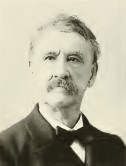 LOUIS A.
EVANS, of St. Cloud, is a native of Pennsylvania. He was
born at Philadelphia, November 22, 1822, a son of Levi
Evans and Elizabeth Wills (Evans). He attended the
public schools of Philadelphia, but was not favored with
the advantages of a college education. While yet a young
man he left his native state and went South, where he
resided until the fall of 1856, when he was attracted by
the allurements of frontier life. In the fall of that
year he began the long and tedious journey with ox teams
which ended at what is now St. Cloud, September 15, the
same year. Here Mr. Evans has resided ever since. LOUIS A.
EVANS, of St. Cloud, is a native of Pennsylvania. He was
born at Philadelphia, November 22, 1822, a son of Levi
Evans and Elizabeth Wills (Evans). He attended the
public schools of Philadelphia, but was not favored with
the advantages of a college education. While yet a young
man he left his native state and went South, where he
resided until the fall of 1856, when he was attracted by
the allurements of frontier life. In the fall of that
year he began the long and tedious journey with ox teams
which ended at what is now St. Cloud, September 15, the
same year. Here Mr. Evans has resided ever since.
He has been repeatedly
elected to offices of various degrees of importance and
responsibility, administrative, legislative and
judicial, and it is conceded that he has filled them all
with credit to himself and to the satisfaction of the
public. When the city of St. Cloud was incorporated in
1862 he was chosen as its first mayor, since which time
he has held the same office four times, which of itself
is an indication of the high esteem in which he is held
by his fellow citizens.
After coming to Minnesota,
Mr. Evans pursued the study of law and was admitted to
the bar in October, 1866. In 1860 and 1861 he served as
the representative of his district in the house of
representatives, and in 1867 was promoted to the upper
house in the state legislature. In 1862 Mr. Evans was
elected city justice, which office he subsequently
resigned to accept that of judge of Probate. After the
expiration of his term as probate judge he was again
elected city justice, only again to resign to accept the
office of judge of probate, to which he had been elected
and which he held without a break for nearly twenty
years, as he did that of city justice nearly as long
after being re-elected to that office. In politics Judge
Evans is an old-line Democrat, and has always been
regarded as one of the reliable adherents of that
political faith, even when his party was so decidedly in
the minority in this state that it cut but little figure
in public affairs. As a leader among men, however, he
was often honored by Minnesota Democrats with the
position of delegate to party conventions, and
represented the state in the national convention at
Cincinnati in 1880, which nominated General Hancock for
president.
During all this period of his
public life in St. Cloud, the duties of which have
demanded most of his attention, he has conducted
privately the business of real estate and insurance, in
which lines of activity he exercised the same energy and
displayed the same qualities of uprightness and
reliability which characterized his public acts. He has
for many years been one of the directors of the First
National Bank, and has been identified in many ways with
enterprises for the promotion of the interests of
St. Cloud.
In early manhood he became a member of the Independent
Order of Odd Fellows and helped to organize the first
lodge of that order in St. Cloud. Although now in his
seventy-fourth year, Judge Evans is an active and
vigorous man, in the full enjoyment of all his
faculties, and actively engaged in the conduct of his
professional and business interests. He was married in
June, 1871, to Elizabeth W. Libby. They have no
children.
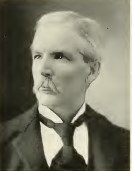 CHARLES F. HENDRYX is one of the best known
newspaper men in Minnesota. He came to the state in
1874, and was successively night editor and city editor
of the Minneapolis Tribune during the time when it was
owned by his father. In 1870 he went to Sauk Center,
purchasing the Weekly Herald, whose editor and
proprietor he has been since that time. Mr. Hendryx was
born at Cooperstown, New York, April 22, 1847, and was
the only son of James I. Hendryx, who for twenty-five
years was editor of the Otsego Republican, of
Cooperstown. He attended the public schools in
Cooperstown, and at the age of fifteen was sent to the
Deer Hill Institute, at Danbury, Connecticut, an
Episcopal school for boys. Where he remained for several
years. The gold pin which he still wears he won as a
prize at this institute. For one year he
attended the Cooperstown seminary, and after that was a
student at Hobart College, Geneva, New York. He finished
his school education at Cornell University, graduating
from that institution as a member of its first senior
class in 1869. Senator J. B. Foraker, of Ohio ; Rev. Dr.
Rhodes, now pastor of St. John’s church, St. Paul, and
Judge Buckwalter, of Cincinnati, were Mr. Hendryx’s
classmates at Cornell. CHARLES F. HENDRYX is one of the best known
newspaper men in Minnesota. He came to the state in
1874, and was successively night editor and city editor
of the Minneapolis Tribune during the time when it was
owned by his father. In 1870 he went to Sauk Center,
purchasing the Weekly Herald, whose editor and
proprietor he has been since that time. Mr. Hendryx was
born at Cooperstown, New York, April 22, 1847, and was
the only son of James I. Hendryx, who for twenty-five
years was editor of the Otsego Republican, of
Cooperstown. He attended the public schools in
Cooperstown, and at the age of fifteen was sent to the
Deer Hill Institute, at Danbury, Connecticut, an
Episcopal school for boys. Where he remained for several
years. The gold pin which he still wears he won as a
prize at this institute. For one year he
attended the Cooperstown seminary, and after that was a
student at Hobart College, Geneva, New York. He finished
his school education at Cornell University, graduating
from that institution as a member of its first senior
class in 1869. Senator J. B. Foraker, of Ohio ; Rev. Dr.
Rhodes, now pastor of St. John’s church, St. Paul, and
Judge Buckwalter, of Cincinnati, were Mr. Hendryx’s
classmates at Cornell.
In 1873 the elder Hendryx
dispensed of his interests in Cooperstown and with his
son, Charles F., came to Minneapolis, becoming
proprietor of the Tribune. The investment was not a
profitable one, and in 1879, father and son moved to
Sauk Center, where the former died in 1883.
Although he has always been an
ardent Republican, and has taken an active part in
politics since coming to Minnesota, Mr. Hendryx has held
but one public office, and that not a very lucrative
one. During President Arthur’s administration he was
postmaster at Sauk Center. In 1896 he was
one of the delegates-at-large from this state to the
national Republican convention at St. Louis, and voted
there with the other delegates from this state for
William McKinley as the party’s nominee for the
presidency. Mr. Hendryx for years has exerted a strong
influence among public men in Minnesota. As an editorial
writer he is strong, clear and convincing; as a public
speaker on educational and literary’ subjects as well as
political, he is eloquent and forceful, with a command
of language that enables him to clothe his thoughts
attractively and elegantly. On September 6,
1876, he was married to Miss Fanny Galt Taylor, daughter
of the late Colonel William Henry Harrison Taylor, who
for sixteen years was state librarian. Mrs. Hendryx is a
first cousin of ex-President Benjamin Harrison, and, of
course, a grand daughter of ex-President William Henry
Harrison. The union has been blessed with three
children. The family is prominent in Episcopal church
circles in northern
Minnesota.
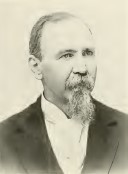 GEORGE REINARD KLEEBERGER of St. Cloud, was
born at Monticello, Lafayette County, Wisconsin,
February 25, 1849. His ancestry was German on his
father’s side, and on his mother’s, Scotch and Irish.
His parents were farmers and pioneers of Southern
Wisconsin. Mr. Kleeberger lived on the farm until
seventeen years of age, attending the country schools in
the winter and working on the farm in the summers, as
farmers’ boys usually did at that time. GEORGE REINARD KLEEBERGER of St. Cloud, was
born at Monticello, Lafayette County, Wisconsin,
February 25, 1849. His ancestry was German on his
father’s side, and on his mother’s, Scotch and Irish.
His parents were farmers and pioneers of Southern
Wisconsin. Mr. Kleeberger lived on the farm until
seventeen years of age, attending the country schools in
the winter and working on the farm in the summers, as
farmers’ boys usually did at that time.
His educational advantages
were meager, but he made the best of those which the
time and place afforded. From the time he was twelve
until he was seventeen he attended various town
academies during the winter and imbibed an ambition to
acquire a higher education. He began teaching school in
his home district when seventeen years of age, the
salary being forty dollars a month, at which he earned
the first money he ever acquired. From seventeen to
twenty-one he was occupied most of the time teaching in
the country schools, but managed to complete the course
at the normal school at Platteville, Wisconsin, where he
graduated in 1870 as the valedictorian of his class. He
was then elected principal of a ward school at
Manitowoc, Wisconsin, which he held for a year, and then
principal of the high school at Green Bay, during the
school year of 1871 and 1872. In 1872 he entered Yale
college and took three years in the Sheffield Scientific
School, graduating there in 1875. On his return to
Wisconsin he was elected to the chair of science at the
state normal school at Whitewater, and occupied that
position from 1875 to 1878.
Mr. Kleeberger then went to
California, where he continued his calling as a teacher;
the first year as principal of the schools of San Diego;
the next year, 1879 and 1880, as principal of the
schools at Weaverville; the following years, 1880 and
1882, as principal of the high school at Marysville, and
from 1882 to 1888 he held the chair of science in the
state normal school at San Jose. In 1888 he was elected
vice-president in the same institution, and was also a
teacher of pedagogy and psychology until 1895.
In the latter year he was elected
president of the state normal school at St. Cloud,
Minnesota, and is now at the head of that
institution.
Mr. Kleeberger is a Democrat in politics, and
believes fully in the principles of free trade and
tariff for revenue only. He is a member of the
Congregational church and occupies an enviable and
influential position in the community in which he lives.
He was married in 1879 in San Francisco, California, to
Miss Mary Allen, of Minneapolis. They have had three
sons, only one of whom is living, Frank
Louis.
 COLIN FRANCIS MACDONALD The publisher of the
St. Cloud Daily and Weekly Times is Colin Francis
Macdonald. Mr.
Macdonald is of Scotch parentage, the son of John
A. Macdonald, M. D., who was assistant surgeon of the
Second Minnesota Cavalry during the Civil War, and
Marjorie McKinley (Macdonald). Both parents
were born in Scotland and are now deceased. Colin
Francis was born in St. Andrews, Nova Scotia, September
23, 1843, and came with his parents to the United States
when five years of age. The family lived in Pittsburg,
Pennsylvania, until the spring of 1856, when they
removed to Minnesota and settled upon a pre-emption
claim the same year, one and a half miles above Belle
Plaine, Scott County. COLIN FRANCIS MACDONALD The publisher of the
St. Cloud Daily and Weekly Times is Colin Francis
Macdonald. Mr.
Macdonald is of Scotch parentage, the son of John
A. Macdonald, M. D., who was assistant surgeon of the
Second Minnesota Cavalry during the Civil War, and
Marjorie McKinley (Macdonald). Both parents
were born in Scotland and are now deceased. Colin
Francis was born in St. Andrews, Nova Scotia, September
23, 1843, and came with his parents to the United States
when five years of age. The family lived in Pittsburg,
Pennsylvania, until the spring of 1856, when they
removed to Minnesota and settled upon a pre-emption
claim the same year, one and a half miles above Belle
Plaine, Scott County.
The subject of this sketch
received his education in the early Minnesota schools.
When seventeen years of age he began work in the Belle
Plaine Enquirer office, where he obtained his first
experience in newspaper work. The following year he
assisted his brother, John L. Macdonald, now of St.
Paul, in establishing the Shakopee Argus, for which
purpose the press and material of the old St. Anthony
Express was purchased of Judge Isaac Atwater, of
Minneapolis, and removed to Shakopee.
Though a boy of hardly
nineteen years of age, Colin responded to President
Lincoln’s call for men and August 18, 1862, enlisted
with Horace B. Strait, at Shakopee, in what subsequently
became Company I, Ninth Regiment Minnesota Volunteer
Infantry. This regiment was sent to the frontier to
operate against the Sioux Indians, and passed the
following winter at Fort Ridgely. October 3, of the next
year the regiment was ordered South, and passed that
winter in Missouri, guarding railroads. The following
spring it was sent to Memphis, Tennessee, where it
joined a force operating in Mississippi, Tennessee and
farther south. It participated in battles at Brice’s
Cross Roads, (or Guntown), Mississippi; Tupelo,
Mississippi; Oxford, Mississippi, raid; the pursuit of
General Price through Arkansas and across Missouri: two
days battle at Nashville; pursuit of the defeated
General Hood; the in vesture of Mobile; siege of Spanish
Fort, etc. Mr. Macdonald was color bearer of his
regiment. At the close of the war he was commissioned as
second lieutenant.
In 1866 he returned to
Shakopee and formed a partnership with Morris C. Russell
in the publication of the Shakopee Argus. The following
spring he removed to St. Paul and secured employment on
the Daily Pioneer as a compositor. He was employed there
until January, 1875, when he removed to St. Cloud and
purchased from Will H. Lamb the Weekly Times, which was
founded in 1861. Mr. Macdonald continued the publication
of the Weekly Times until September 27, 1887, when he
commenced the publication of the Daily Times in addition
to the Weekly. These two editions’ he is still
publishing. His paper is Democratic in its politics, and
as Stearns County is strongly Democratic, it is
influential and profitable. Mr. Macdonald is and
has been, since his first vote, a Democrat.
He was elected to represent
the Stearns County district in the state senate in 1876,
and was re-elected in 1878 and 1880. During this period
he was a member of the only two courts of impeachment in
the history of the state —one fur the trial of Judge
Sherman Page, of Austin, and the other for the trial of
Judge F.
St. Julien Cox, of St. Peter, he was one of the
four delegates-at-large from Minnesota to the National
Democratic Convention at Chicago in 1884 which nominated
Grover Cleveland and Thomas A. Hendricks. He has also
for many years served as a member of the Democratic
State Central and congressional historical
committees.
He was elected to the office of mayor of St.
Cloud in 1883 and re-elected in 1884 and 1885. In
recognition of his valuable services to the Democratic
party President Cleveland appointed Mr. MacDonald
Receiver of the Public Moneys at St. Cloud in 1885 which
office he filled until February 10, 1889. He was again
appointed to the same position by Mr. Cleveland March 1,
1894 which office he still holds, Mr. Macdonald has
always taken a deep interest in the affairs of his own
city and has been connected with all public movements
intended to build up and benefit it.
He is a Catholic in his religious
belief. October 27, 1868, he was married to Julia E.
Lord, daughter of Dr. Charles Lord, of Shakopee, who
died in January 1876. He was remarried February 21,
1881, to Elizabeth M. Campbell
daughter of Edward Campbell of Forest City, and sister
of ex-Marshal Campbell, of this state. By the first
union four children were born, two of whom
survive—Charles I. Macdonald, city editor of the Duluth
Herald, and Julia MacDonald. By the second marriage four
children were born three of whom are living—Edward
Albert, Marjorie Elizabeth and Jessie
Mary.
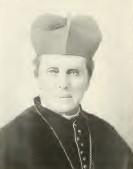 MARTIN MARTY Right Reverend Martin Marty, O.
S. U., Second Bishop of St. Cloud, is a native of
Switzerland.
He was born at Schwvz, January 12, 1834. He early resolved to devote his life to the
service of the church, and entering the great
Benedictine Abbey of Einsiedeln, made his profession May
20, 1855. The young monk had already pursued his
theological studies with such zeal and talent that the
next year he was ordained priest, on the fourteenth of
September. MARTIN MARTY Right Reverend Martin Marty, O.
S. U., Second Bishop of St. Cloud, is a native of
Switzerland.
He was born at Schwvz, January 12, 1834. He early resolved to devote his life to the
service of the church, and entering the great
Benedictine Abbey of Einsiedeln, made his profession May
20, 1855. The young monk had already pursued his
theological studies with such zeal and talent that the
next year he was ordained priest, on the fourteenth of
September.
About that time a colony of
monks from Einsiedeln were sent to Indiana and founded
the Monastery of Saint Meinrad Dom. Marty arrived in
1860 to share the labors of his brethren. The little
community prospered, a college was established and the
mission work became more extensive. In 1870 Pope Puis
IX. erected
St. Meinrad’s into an abbey, constituting the fathers
connected with it into the Helveto-American
Congregation, and its prior, Martin Marty, was made
mitred abbott. The corner stone of the new monastery was
laid May 22, 1872. Abbot Marty presided for several
years, perfecting the institute under his care and
extending the missions, erecting churches and fostering
education.
He had a long cherished
desire, however.
to undertake mission work among the Indians and
in 1876 he set out with some fathers to the Dakota
Territory. The work there gave such promise that he
resigned the dignity of abbot to devote himself to his
new duties. In 1879 the territory of Dakota, comprising
one hundred and seventy-five thousand square miles, was
formed into a vicariate apostolic and entrusted to the
care of the zealous Benedictine, who was consecrated
Bishop of Tiberias, February 1, 1880. He continued in
charge until 1889, when the vicariate was divided into
the dioceses of Jamestown and Sioux Falls, Bishop Marty
retaining the latter. In this year he was selected by
President Cleveland to serve as a member of a commission
appointed to treat with the Chippewa Indians of
Minnesota concerning the cession of their lands, and
with Senator Henry Rice and Dr. Joseph Whiting,
he visited the different reservations and secured from
the Indians their consent to the proposals made by
congress.
In 1895 Bishop Marty was
transferred to the Sec of St. Cloud as
successor of Rt. Rev. Bishop Zardetti, who was
transferred to the Archiepiscopal Sec of Bukarest, in
Romania. At the beginning of 1896 the diocese of St.
Cloud numbered seventy-two priests, eighty churches,
twelve chapels, one university and seminary, forty-six
parochial schools, with an attendance of five thousand
one hundred children; one orphan asylum, containing one
hundred orphans ; five other charitable institutions,
and a population of about forty thousand Catholics. The
See of St. Cloud is one of the most important in the
Northwest, and to the care and promotion of this
important work Bishop Marty devoted his entire time and
energy, Bishop Marty died September 18,
1896.
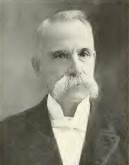 NELSON H. MINER was born on January 26, 1833,
at Shoreham, Addison County, Vermont. He was the son of
Hiram and Eliza Miner, a farmer and mechanic and in fair
financial circumstances. His grandfather,
Richard Miner, was a soldier in the Continental Army
during the Revolution and participated in the Battle of
Bennington under Stark. His early educational advantages
were limited to a few months each year in the country
school and to the use of a small school library, and a
few newspapers and periodicals received by the family. NELSON H. MINER was born on January 26, 1833,
at Shoreham, Addison County, Vermont. He was the son of
Hiram and Eliza Miner, a farmer and mechanic and in fair
financial circumstances. His grandfather,
Richard Miner, was a soldier in the Continental Army
during the Revolution and participated in the Battle of
Bennington under Stark. His early educational advantages
were limited to a few months each year in the country
school and to the use of a small school library, and a
few newspapers and periodicals received by the family.
After leaving home and
working on a farm for nearly two years he attended the
district school for one winter term and then entered
Franklin Academy, at Malone, New York. Here he studied
for about three years, paying his way from the savings
of the two previous years, and by teaching and farm work
during vacations. Instead of pursuing his studies
further he commenced to read law in the office of
Parmelee & Fitch, in Malone, New York, and was
admitted to the bar in that state in 1856. He practiced
law two years in St. Lawrence and Franklin counties, New
York, and then moved to Waupun, Wisconsin, in 1858,
where he built up an extensive practice.
In November, 1860 he came to
Minnesota and formed a law partnership with Judge N. H.
Hemiup, under the firm name of Miner & Hemiup. In
April, 1861, Mr. Miner enlisted in Company E, First
Minnesota Infantry, for a three months’ term, and served
about one month when the regiment was disbanded for the
purpose of reorganizing under the three-year
enlistment.
At the time of the reorganization he was confined
to his bed by sickness, and was thus prevented from
re-enlisting. But on the breaking out of the Sioux war
of 1862 he volunteered, and was one of Captain
Northrup’s company which went to the relief of Fort
Ridgley. On
August 29, 1864, he enlisted at St. Anthony in Company
E, of Hatch’s Battalion Cavalry volunteers, and served
on the Minnesota frontier until discharged with the
company on May 1, 1866.
During the same month he went
to Sauk Center, Minnesota, and resumed the practice of
law. On the first of January, 1870, he became associated
with A. Barto, afterwards Lieutenant Governor, under the
firm name of Miner & Barto. This firm continued ten
years, and was resumed in name in 1894, when L. R. Barto, the son
of Mr. Miner’s former partner, became his associate in
practice.
Mr. Miner has always been a
Democrat, though of late years he has not been
identified with any political party, he was for several
years a member of the Board of Education of St. Anthony,
and drafted the act, and procured its passage, by which
the Board of Education of the town of Sauk Center was
incorporated. The school system of the city is still
regulated by this act. Mr. Miner served as a member and
secretary of the board from its organization in 1869
until 1877. During this time he was instrumental in
securing the building of the first school house and in
originating the excellent graded school system of the
city. He
originated and did much for the support of the Bryant
Library of Sauk Center, an institution which now
contains about three thousand volumes. In 1867 and again
in 1868 Mr. Miner served his county in the state
legislature. During his service as representative he
drafted and brought to passage the act abolishing
capital punishment in this state. He is now mayor of
Sauk Center, serving his second term in that office. Mr.
Miner is a member of the Masonic order, of the G. A. R.,
and of the K. P. He is an attendant of the Protestant
Episcopal Church.
On January 1, 1857, he was married
to Miss Julia E. Martin, who died on April 9, 1872. They had three
children, Gertrude Eliza, Helen Adeline and Jessie
Fremont. On November 13, 1874, he was married to Miss
Kate Martin, his present
wife.
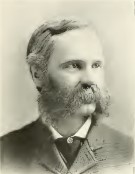 WILLIAM BELL
MITCHELL has until recently, been identified with
journalism in Minnesota since 1858. His father, Henry Z.
Mitchell, came to Minnesota from Pennsylvania and by
appointment of Governor Ramsey was made commissary
general of Minnesota during the time of the Indian
troubles. He located in St. Cloud in May, 1857, was
appointed postmaster of that town by President Lincoln,
and was deputy provost marshal for a time during the
war. His wife was Elizabeth A. Canon, whose ancestors
were Scotch Covenanters, and among those who suffered
many privations and persecutions in Scotland for the
sake of their faith. Her only sister was the celebrated
Mrs. Jane Gray Swisshelm, who cut a large figure in the
anti-slavery movement and in Minnesota journalism in the
early history of the state. The subject of this sketch
was born May 14, 1843 at Wilkinsburg, now a part of the
city of Pittsburg. He attended a local academy and spent
a year in the mathematical department of Duff’s College,
Pittsburg, before moving to Minnesota. After his arrival
in St. Cloud he attended an academy in that town for a
short time, and for a year or more took private lessons
in such time as his work in a printing office would
permit, but by the time he was eighteen his school days
were over. WILLIAM BELL
MITCHELL has until recently, been identified with
journalism in Minnesota since 1858. His father, Henry Z.
Mitchell, came to Minnesota from Pennsylvania and by
appointment of Governor Ramsey was made commissary
general of Minnesota during the time of the Indian
troubles. He located in St. Cloud in May, 1857, was
appointed postmaster of that town by President Lincoln,
and was deputy provost marshal for a time during the
war. His wife was Elizabeth A. Canon, whose ancestors
were Scotch Covenanters, and among those who suffered
many privations and persecutions in Scotland for the
sake of their faith. Her only sister was the celebrated
Mrs. Jane Gray Swisshelm, who cut a large figure in the
anti-slavery movement and in Minnesota journalism in the
early history of the state. The subject of this sketch
was born May 14, 1843 at Wilkinsburg, now a part of the
city of Pittsburg. He attended a local academy and spent
a year in the mathematical department of Duff’s College,
Pittsburg, before moving to Minnesota. After his arrival
in St. Cloud he attended an academy in that town for a
short time, and for a year or more took private lessons
in such time as his work in a printing office would
permit, but by the time he was eighteen his school days
were over.
Mr. Mitchell recalls
that his first dollar, which he received in depreciated
county orders, was earned in the spring of 1858, when he
was only fifteen years of age. He was a member of a
surveying party under T. H. Barrett, afterwards Gen.
Barrett, to locate the state road from St. Cloud to
Breckenridge, through a country then unsettled. This work
occupied nearly six weeks. The following winter Mr.
Mitchell obtained employment in the office of the St.
Cloud Visiter, a paper published by Mrs. Swisshelm,
intending to remain at first but a short time. He
learned to set type, was afterwards made foreman of the
office, then local editor and news editor of the paper,
did a little general editorial work and so on, with the
result that the engagement which was intended to be but
temporary, became permanent. The Visiter was
the red-hot antislavery paper which fought the battle of
abolition so vigorously that one night the type, and
part of the press, was thrown into the Mississippi
River.
After the war broke out Mrs.
Swisshelm went to Washington to devote herself to
hospital work. Mr. Mitchell continued to run the paper,
and in 1864 purchased the plant. Mrs. Swisshelm had
changed the name of it to the Democrat. This was a
political misnomer, and Mr. Mitchell named
it the Journal. In 1876 he purchased the Press, which
had been started four years before, and consolidated the
two papers under the name of the Journal-Press. He
continued the publication of this paper as a straight
out Republican weekly, and made it one of the best
country weeklies in the whole country. In 1892, having
become interested in a pulp mill and other manufacturing
enterprises, Mr.
Mitchell sold the paper on September 1, to Alvah
Eastman, of Anoka, still retaining, however, a business
interest in and having editorial connection with the
paper. Mr. Mitchell’s manufacturing business was
destroyed by fire in August, 1893, and since that time
be has been engaged in the real estate and loan
business. He has been for a long time active in
promoting the best interests of the city of St. Cloud,
and was an active, member and director of the St. Cloud
Waterpower Company which constructed the dam across the
Mississippi River at that
point.
Mr. Mitchell has always been a
Republican, and while he was never a candidate for any
elective office, has held several appointive offices.
President Lincoln made him receiver of the land office
of St. Cloud in 1865. He was removed for political
reasons by President Johnson, was re-appointed by
President Hayes in 1878 and by President Arthur in 1882,
and was removed by President Cleveland for “offensive
partisan-ship” in 1885. He has been a member of the
state board of normal school directors and has been
resident director of the Normal School of St. Cloud
since 1887.
He has taken an active interest in politics and
has served on various party committees. Mr. Mitchell is a
member of the Presbyterian Church. He was married
December 7, 1870 in Marietta, Ohio, to Miss Emily
Whittlesey. They have eight children. Carrie T., Mildred
W., Eleanor, Leslie, Jane W., Henry Z., Ruth H. and
Dorothy.
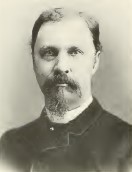 DOLSON BUSH SEARLE is judge of the district
court of the Seventh District of Minnesota, and resides
at St.
Cloud. His father was Almond D. Searle, who
resided in Franklinville, Cattaraugus County, New York,
and was a prosperous farmer. His mother was Jane Scott,
of Scotch birth and a lineal descendant of Sir Walter
Scott. On his father’s side, Mr. Searle’s grandfather
was Elijah Searle, a man of more than ordinary ability
and force of character. He took active part in public
and political affairs. He was formerly a resident of
Whitehall, New York, and was a soldier in the War of
1812. He also took part in the battle of Lake Champlain.
He died about the year 1865, and was then about seventy
years of age. Judge Searle’s grandfather on his mother’s
side was John Scott, of Scotch descent, and a man of
good ability. He was a farmer at Whitehall, New York,
and was a soldier in the War of 1812. DOLSON BUSH SEARLE is judge of the district
court of the Seventh District of Minnesota, and resides
at St.
Cloud. His father was Almond D. Searle, who
resided in Franklinville, Cattaraugus County, New York,
and was a prosperous farmer. His mother was Jane Scott,
of Scotch birth and a lineal descendant of Sir Walter
Scott. On his father’s side, Mr. Searle’s grandfather
was Elijah Searle, a man of more than ordinary ability
and force of character. He took active part in public
and political affairs. He was formerly a resident of
Whitehall, New York, and was a soldier in the War of
1812. He also took part in the battle of Lake Champlain.
He died about the year 1865, and was then about seventy
years of age. Judge Searle’s grandfather on his mother’s
side was John Scott, of Scotch descent, and a man of
good ability. He was a farmer at Whitehall, New York,
and was a soldier in the War of 1812.
The subject of this sketch
was born June 4, 1846 at Franklinville, New York. His
early education was obtained in the common schools and
the academy of his native town. He graduated from the
Columbian Law College of Washington, D. C, in 1868, with
high honors. Three years later he came to Minnesota and
began the practice of law with Hon. E. O. Hamlin, at St.
Cloud, the style of the firm being Hamlin & Searle.
Mr. Searle
soon obtained a prominent position as lawyer, and also
took an active part in state politics as a Republican.
He was elected city attorney of St. Cloud for six years;
county attorney of Stearns County two years, although in
a strong Democratic county, and his majority reached as
high as eleven hundred. He was appointed United States
district attorney in April, 1882, by President Arthur,
and served with conspicuous ability until December,
1885, when he resigned on his own motion in order to
give President Cleveland a chance to appoint his
successor. Mr.
Searle was a member of the state central
Republican committee in 1886 and 1887, and took an
active part in the Republican national campaign in the
fall of 1884. He was appointed district judge of the
Seventh Judicial District November 12, 1887, by Governor
McGill, and re-elected without opposition in the fall of
1888, and again in 1894. Judge Searle was nominated for
congress from the Sixth District in 1892. There was a
vigorous contest for that nomination between him and H.
Z. Kendall, of Duluth. Judge Searle made a brilliant
campaign and ran ahead of his state ticket and national
ticket over a thousand votes, notwithstanding the
opposition to him in St. Louis County,
where he received only a bare majority, although
Governor Nelson received about fifteen hundred majority.
He was defeated at the polls by Major Baldwin, but by a
very small majority.
Judge Searle has an honorable
war record.
He enlisted as a private in Company I,
Sixty-fourth New York Infantry, in August, 1861, and
served for nearly two years. He was engaged in the
following battles: Yorktown, Seven Pines, Fair Oaks,
Savage Station, Malvern Hill, the seven days’ fight
before Richmond, the second battle of Bull Run,
Antietam, White Oak Swamp, Lee’s Mills, Williamsburg and
other notable engagements. Mr. Searle,
having been discharged from active service in the army
in 1863 on account of disability, was at that time
appointed clerk in the war department at Washington and
held that position until 1871. He was during most of
this period in charge of an important bureau in the
Adjutant General’s office.
Judge Searle has always been a
Republican, and until he went on the bench was very
active in political matters, and has given his influence
and best judgment to the proper conduct of the municipal
affairs of his own city. He is a member of the Masonic
fraternity, being’ a Master Mason, a Royal Arch Mason
and a Knight Templar. He is also a member of the Knights
of Pythias and of Lodge No. 59 of the Elks. He is a
prominent member of the G. A. R., and on October 24,
1896, was appointed aid-dc-camp, with the rank of
colonel, upon the staff of the commander-in-chief of the
Grand Army of the Republic. He was married in 1875 to
Miss Mary Elizabeth Clarke, of Worcester,
Massachusetts.
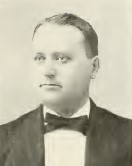 GEORGE WARREN STEWART is a lawyer at St
Cloud. His father, Joseph Stewart, came to Minnesota
from Prince Edward’s Island in 1853 and located at
Bellevue, Morrison County, where he was engaged in
farming and lumbering for the next ten years. In 1863 he
went into the army as a member of the Seventh Minnesota
regiment, and died in the service at St. Louis,
Missouri, of smallpox contracted while in the army. He
was a native of Greenock, Scotland. His wife was
Joanna B. Hill, of New Brunswick, her parents both being
natives of Maine and members of the well-known families
of Hill and Phillips in that state. The ancestors of the
subject of this sketch, both on his father’s and
mother’s side, were honest and well-to-do farmers and
lumbermen, none of whom, however, ever occupied any very
prominent positions except in local affairs, but have
been recognized as intelligent and worthy people in the
limited circle in which they moved. GEORGE WARREN STEWART is a lawyer at St
Cloud. His father, Joseph Stewart, came to Minnesota
from Prince Edward’s Island in 1853 and located at
Bellevue, Morrison County, where he was engaged in
farming and lumbering for the next ten years. In 1863 he
went into the army as a member of the Seventh Minnesota
regiment, and died in the service at St. Louis,
Missouri, of smallpox contracted while in the army. He
was a native of Greenock, Scotland. His wife was
Joanna B. Hill, of New Brunswick, her parents both being
natives of Maine and members of the well-known families
of Hill and Phillips in that state. The ancestors of the
subject of this sketch, both on his father’s and
mother’s side, were honest and well-to-do farmers and
lumbermen, none of whom, however, ever occupied any very
prominent positions except in local affairs, but have
been recognized as intelligent and worthy people in the
limited circle in which they moved.
George Warren was born at
Bellevue, Morrison County, Minnesota, June 18,1859.
After preparing in the district schools he entered the
State Normal School at St. Cloud and graduated from the
advanced academic course. In August, 1883, he began the
study of law in the office of Taylor & Taylor at
St. Cloud.
He was admitted to practice December 14, 1884, and tried
his first case the following January in a justice court,
twenty-three miles from St. Cloud, having driven there
before nine o’clock in the morning with the thermometer
at thirty-five degrees below zero. He won his case
before the jury and returned the same night, with the
magnificent fee of five dollars, four of which went to
pay his livery bill. However, his legal practice is not
to be judged by the financial results of its beginning.
He has since practiced his profession continuously at
St. Cloud, for one year with Oscar Taylor, under the
firm name of Taylor & Stewart; for a short time with
Hon. D. B.
Searle; then with George H. Reynolds for three years,
and since January 1, 1891, has been practicing by
himself. Mr. Stewart takes an active interest in the
affairs of St. Cloud, and has for eight years been a
member of the school board, and for the last six years
its secretary. For five years he has served in the city
council, and at this writing is the president of this
body.
In politics he is a Republican, but
beyond the local offices undertaken in the service of
his fellow citizens of .St. Cloud, he has never held any
office. He is a member of St. Cloud Lodge, No. 32. Knights of
Pythias, and St. Cloud Royal Arcanum Council. He is a
member of the Unitarian church, of St. Cloud, and has
been secretary of the society since its organization,
about eight years ago. Mr. Stewart was married August
23, 1888, to Miss Mary L. Huntsman, and has two sons,
Warren H. and Donald.
The information
on Trails to the Past © Copyright may be used in personal family history research, with source citation. The pages in entirety may not be duplicated for publication in any fashion without the permission of the owner. Commercial use of any material on this site is not permitted. Please respect the wishes of those who have contributed their time and efforts to make this free site possible.~Thank you! |



